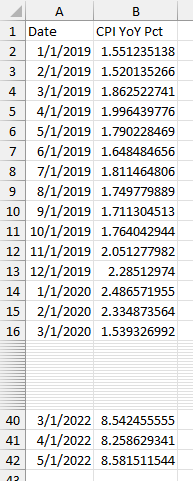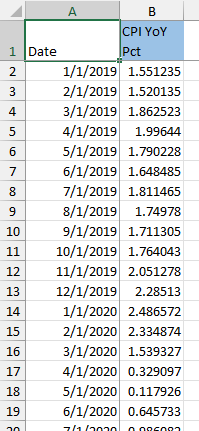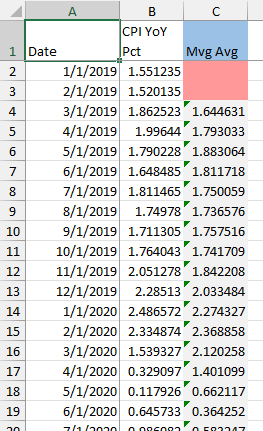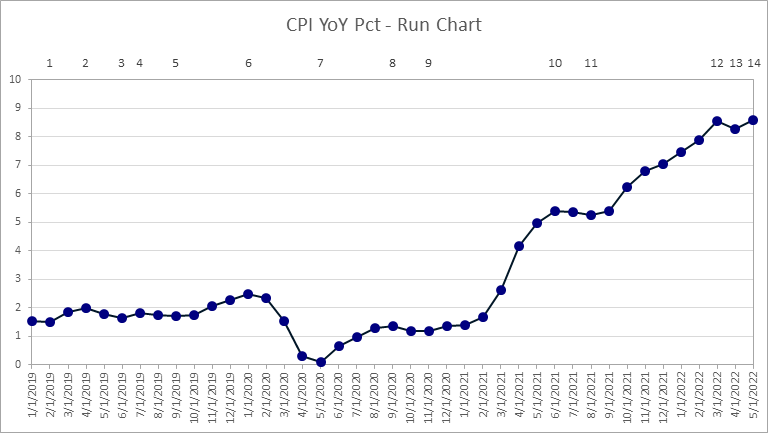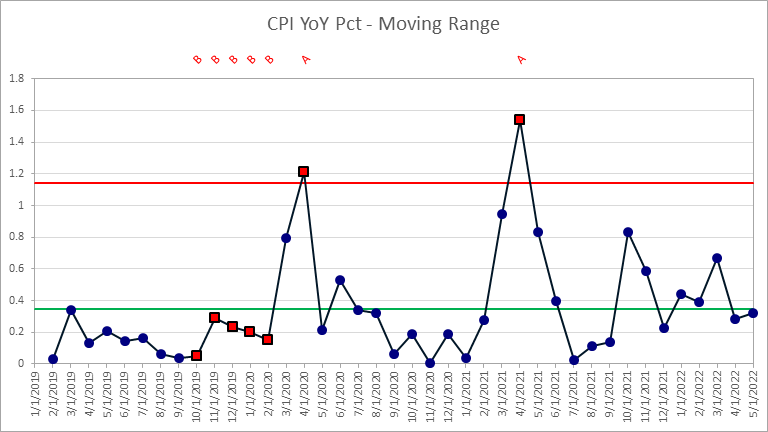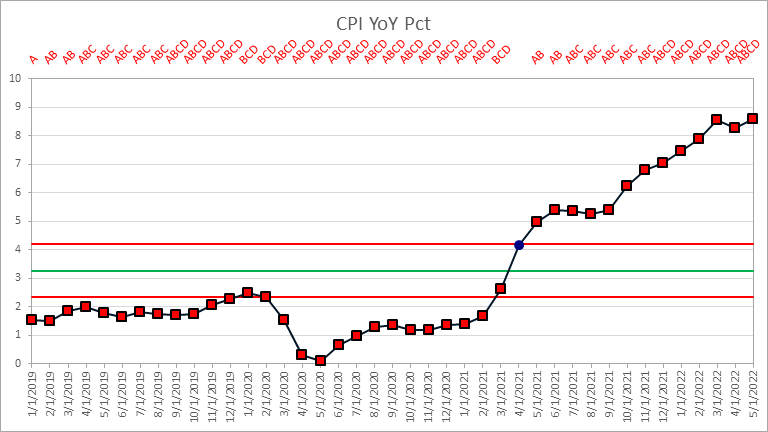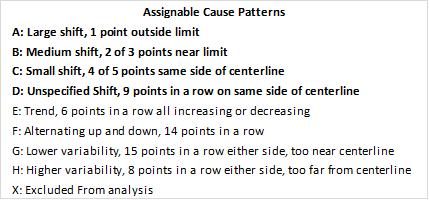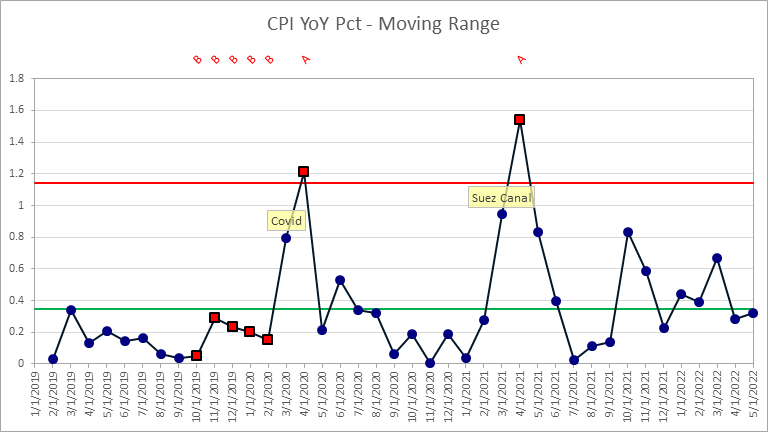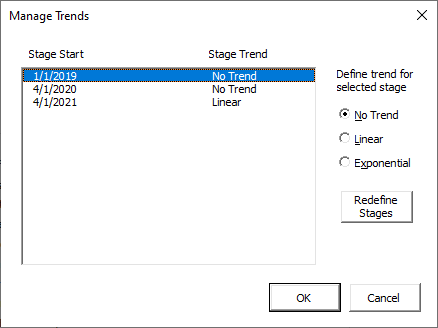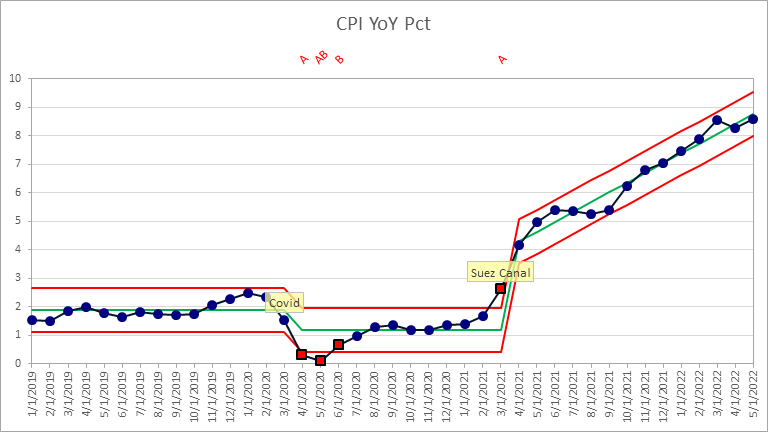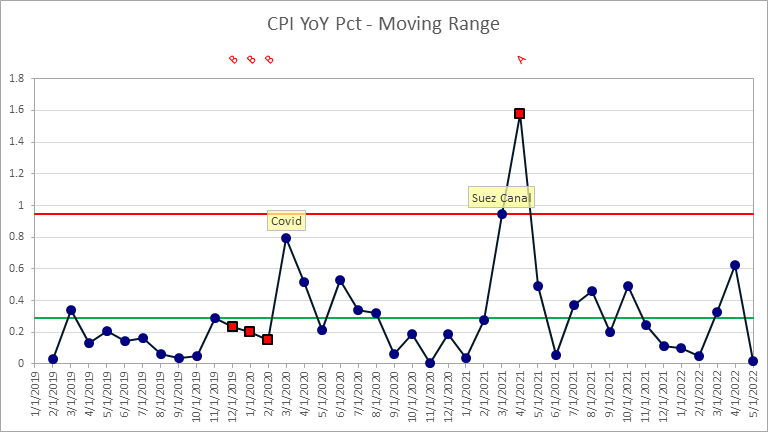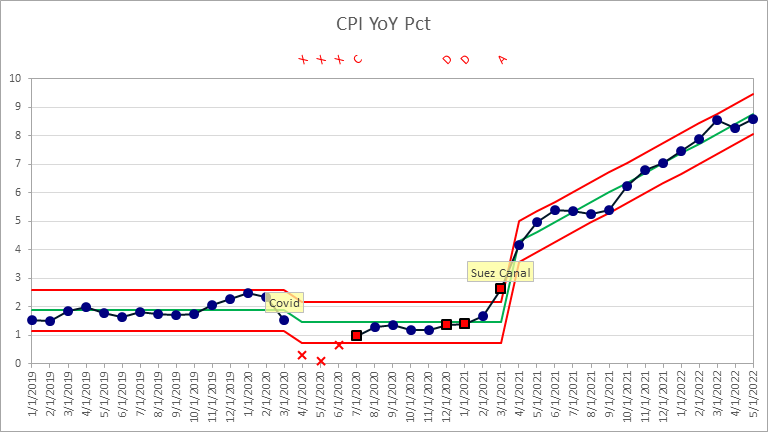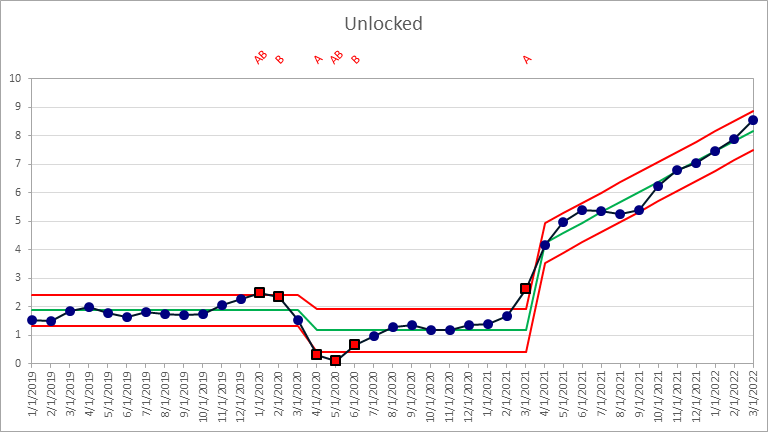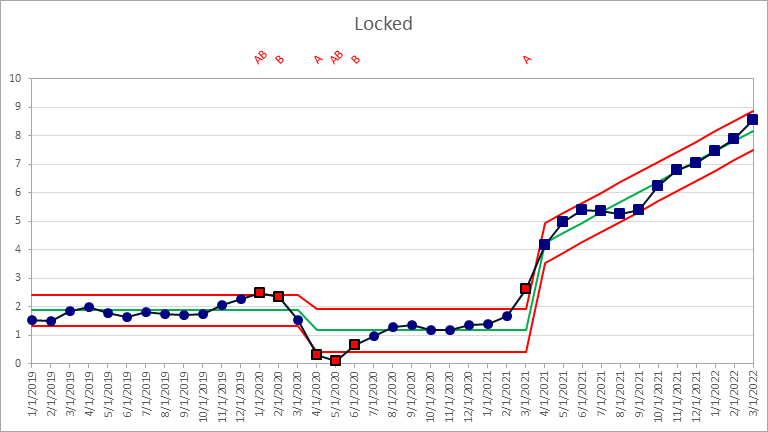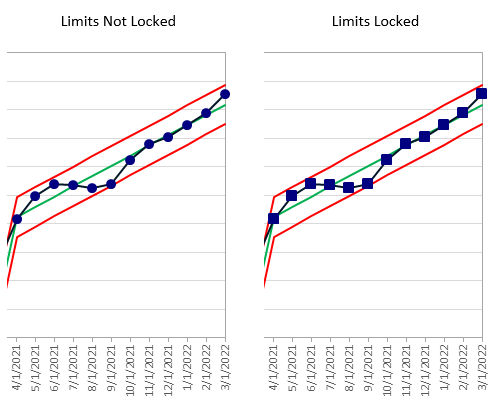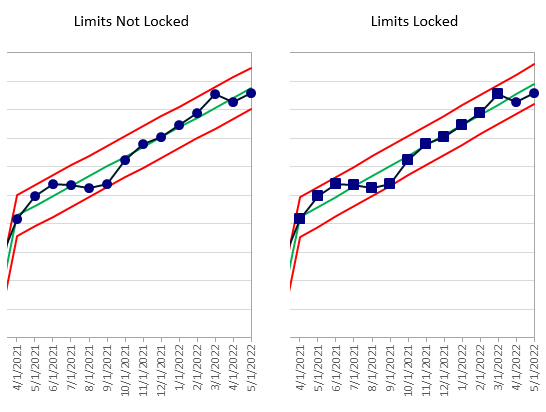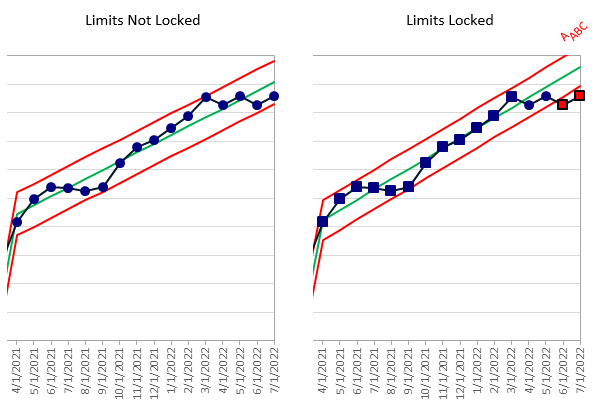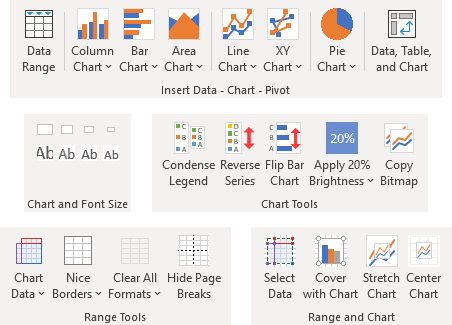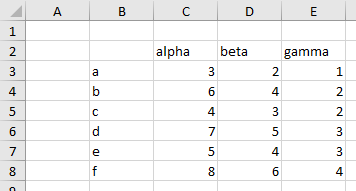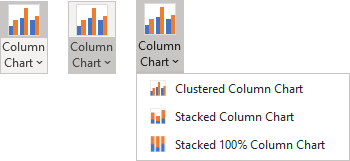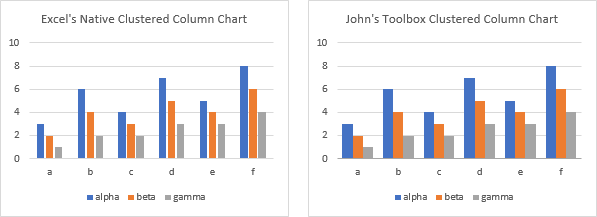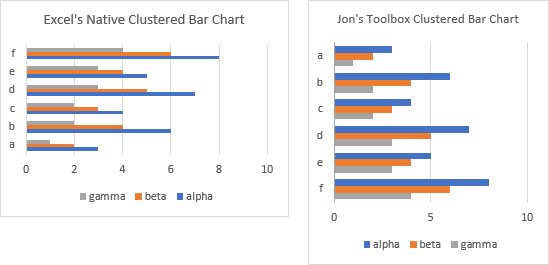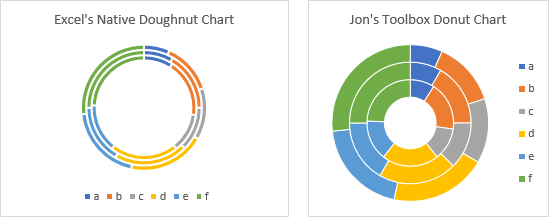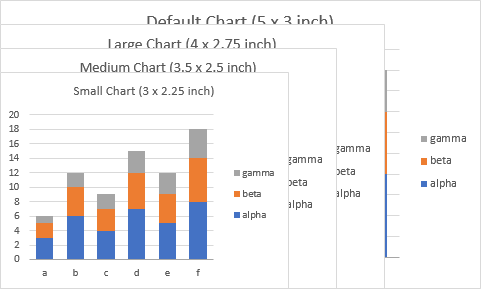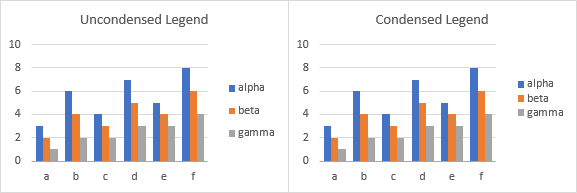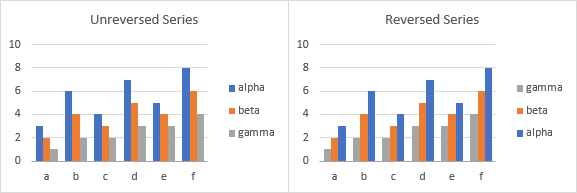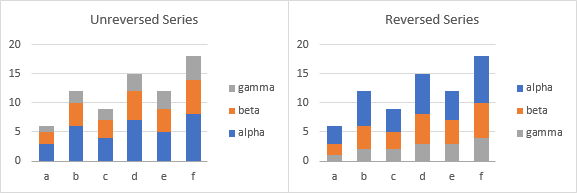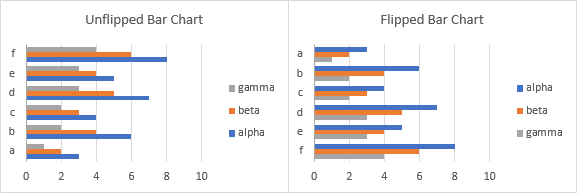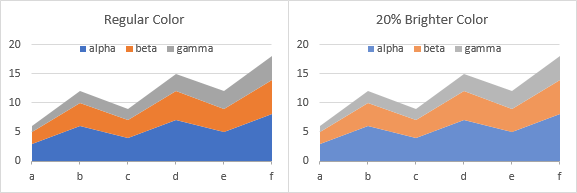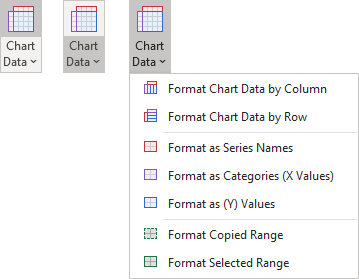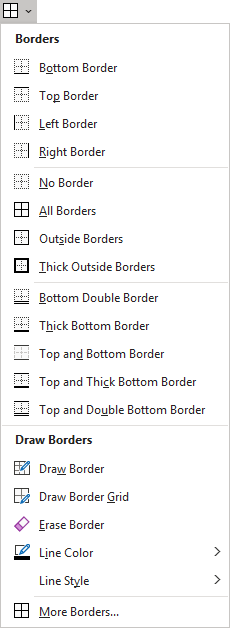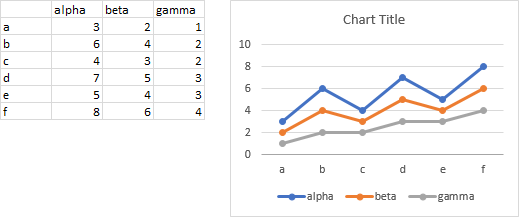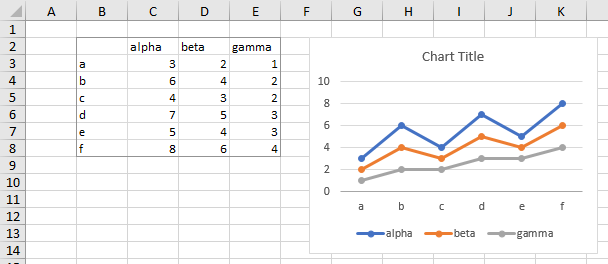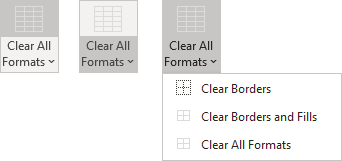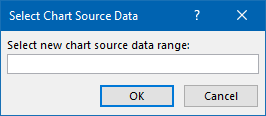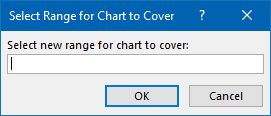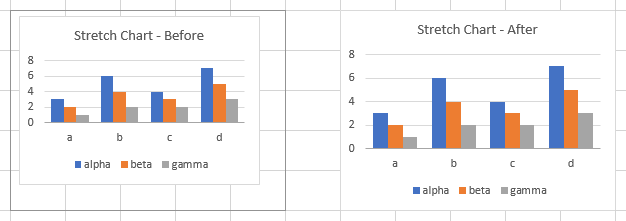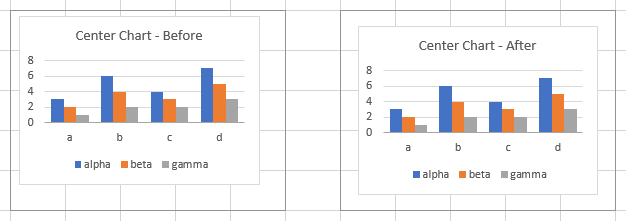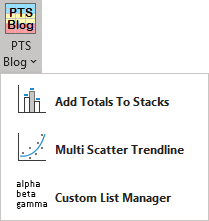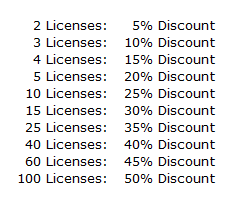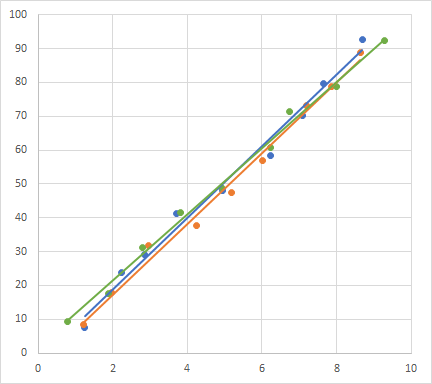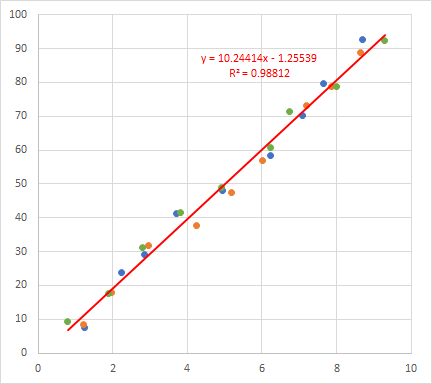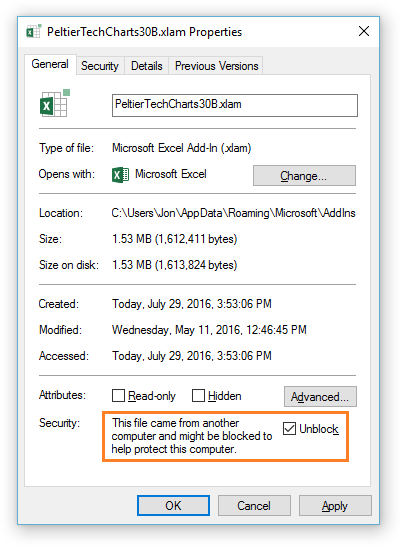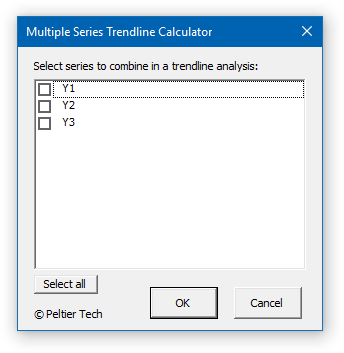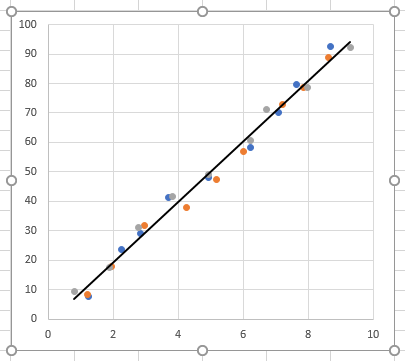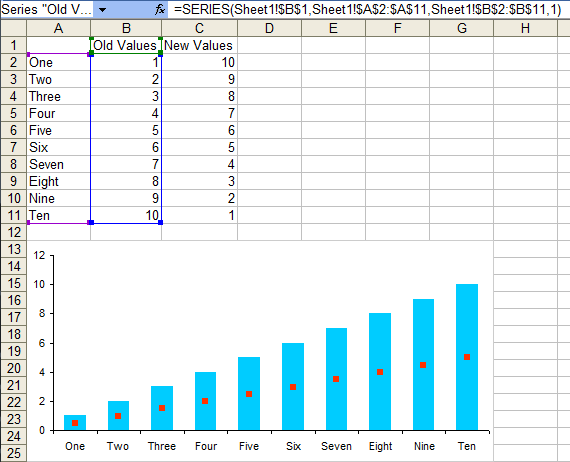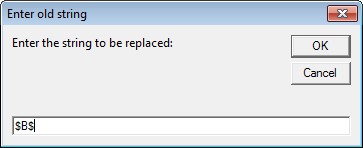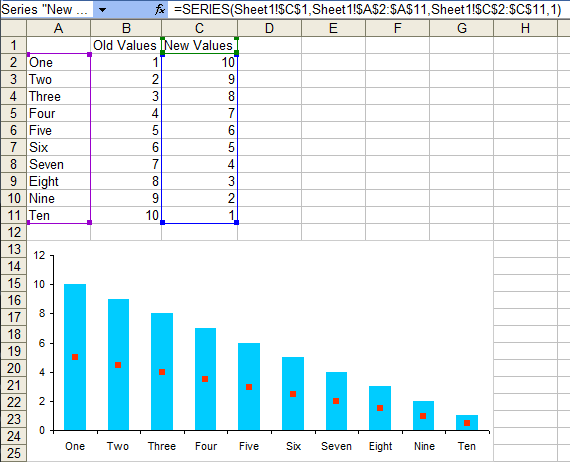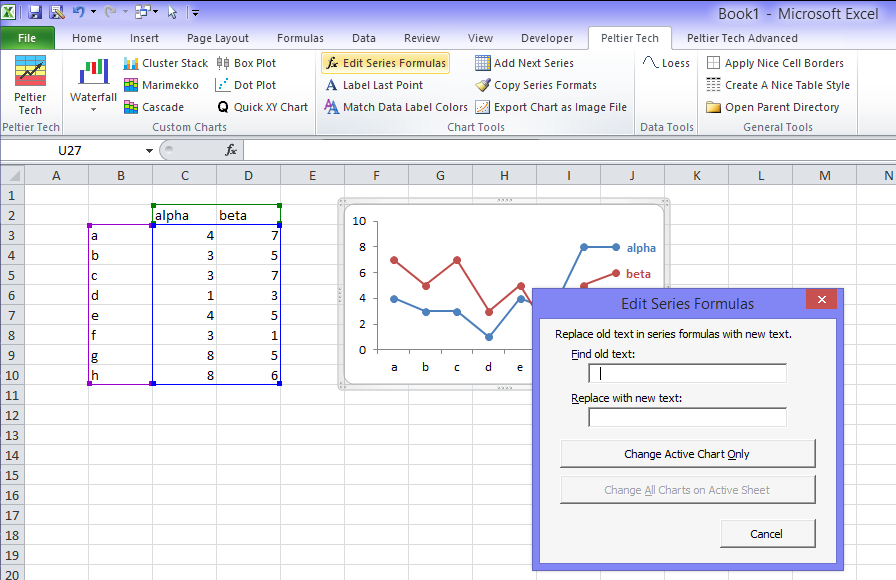Over twenty years after it was released, Excel users are still searching the internet for JWalk Chart Tools. And when they can’t find it, they ask if anyone knows of a replacement.
Tl;dr – there’s a new version, continue reading to the end to learn about it.
John Walkenbach, aka Mr. Spreadsheet
Two decades ago, John Walkenbach was one of the foremost experts on Excel, leading to his nickname, Mr. Spreadsheet. One of the first Excel MVPs, John had a website filled with helpful lessons and useful examples about Excel. John’s style was down-to-earth; even his VBA code read like a conversation, with variable names using common words and phrases. He wrote a series of books, many of which I own, including the Excel Bible, Excel Formulas, Excel Charts, Power Programming with VBA, and more. Each new release of Excel spurred a new set of John’s must-read books.
John is now retired, lives in a warm climate, and plays guitar with friends. He even gets paid gigs. He says he doesn’t use Excel much anymore and finds himself Googling for answers when he gets stuck. But then, so do I.
What is JWalk Chart Tools?
One of John’s many contributions to the Excel community was a small VBA add-in called JWalk Chart Tools, last released to the Excel community in 2002. This simple toolset filled a few gaps and eased some annoyances around Excel charts. Several of the features of JWalk Chart Tools are no longer needed: either the annoying behavior has been removed from Excel charts, or Microsoft has added the capabilities to Excel. Let’s remember what JWalk Chart Tools did for its users.
Data Labels

You’ve been able to label your series in an Excel chart for almost as long as there have been Excel charts. But the user interface limited you to simple labels, like the category names or the Y values. If you wanted custom labels, you would have to edit the text of each label, creating static labels; for dynamic labels, you could link each label to a worksheet cell.
Building custom labels was tedious, especially because few users knew about linking labels to cells. But JWalk Chart Tools provided a means to easily link series labels to a worksheet range.
Rob Bovey’s XY Chart Labeler, which predates JWalk Chart Tools and is still available, also has this capability to build links one series at a time. Despite its name, the XY Chart Labeler works on all charts that accommodate data labels. Rob also was one of the early Excel MVPs and was one of the authors of Professional Excel Development, a bit dated but still a must-read for heavy users of Excel VBA.
This feature is no longer needed. In Excel 2013, Microsoft introduced a new data label option, Value From Cells. Select a set of data labels in a chart and press Ctrl+1 to format the labels. Select Value From Cells in the Format Data Labels task pane and click Select Range.
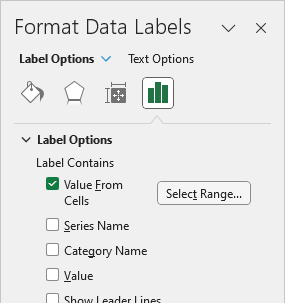
Select the applicable data range, and the labels will be linked to the selected cells.
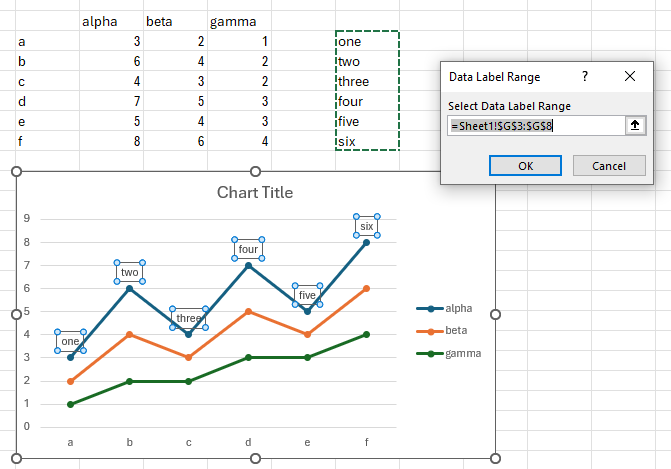
In at least one way, the Microsoft approach is better than the Walkenbach/Bovey linking approach. If part of a series is hidden by hiding the rows or columns of some of its data, the built-in Value From Cells labels don’t display the hidden labels. But the linked formulas are not always hidden. If you have unselected Properties Follow Chart Data Point, the linked labels from the hidden data points will appear on unhidden points in the chart.
Chart Size
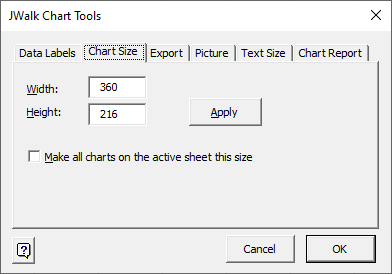
It has always been possible to resize your charts, but it was not easy to make your chart precisely the size you wanted. JWalk Chart Tools gave you a way to see the dimensions of your chart, in points (72 points per inch), and to apply a precise size to the active charts or to all charts on the active sheet.
This feature is also no longer needed. Since Excel 2007, the Chart Format tab of the ribbon has had a Size group that includes the height and width of the chart, not in points but in the dimensions of the user’s locale. You can see the size and set a new size right on the ribbon. And if multiple charts are selected, the Shape Format ribbon tab has the same Size group.
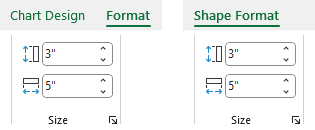
Picture
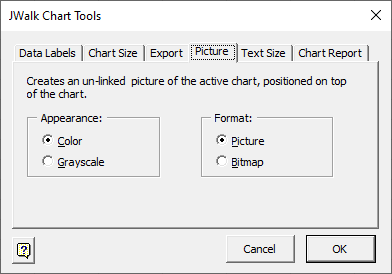
This feature made a static image of your chart, aligned on top of the original chart. You had a choice of a color or grayscale image, in either a picture format (a group of lines, rectangles, and other shapes) or a bitmap (an array of tiny colored dots). This particular feature probably worked well in Excel 2003 but isn’t reliable in Excel 365: when I recently tested it, all pictures were bitmaps regardless of the setting, and no grayscale images were produced.
In Excel 2003 and earlier it was tricky to produce a picture of your chart. The Edit menu only had Copy, which copied the whole chart, data and all. There was no Paste Special if a chart was selected, so no option to paste as a picture. If you held down Shift while selecting the Edit menu, an obscure action that few users were aware of, Copy became Copy Picture, and you had some choices about how to copy the chart. Among the options were Picture vs Bitmap, the same options offered by JWalk Chart Tools. The on-screen vs. as-printed options never made sense to me, as I could never see any difference between them.
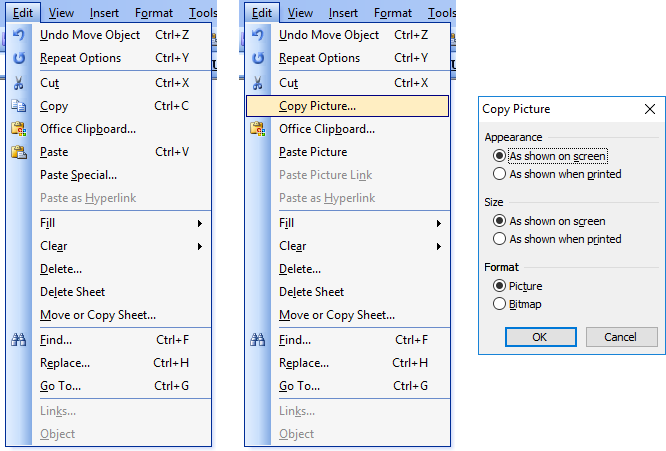
Excel 2007 made Copy as Picture slightly more obvious (maybe) by placing it under Home tab > Paste > As Picture. But I think I didn’t find it for a long time, and I’m sure some users never did.
If you did find Copy as Picture, the Copy Picture dialog had fewer options, including only one set of nonsensical on-screen vs. as-printed options.

If you simply copied a chart, you could go to Home tab > Paste > Paste Special and find a number of options for pasting an image of the copied chart. This was a big improvement over Excel 2003. Note that the dialog implies that you could paste a linked picture, but this option has never been enabled in Excel (though it can be enabled in PowerPoint and Word).

You can also select Home > Paste > As Picture > Paste as Picture, and Excel will paste a picture of your chart; it’s pasted directly as a bitmap, without a dialog to select options.
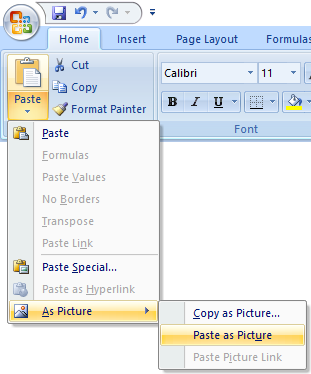
Finally Excel 2010 put Copy as Picture under Home > Copy, where it has a better chance of being discovered by users.
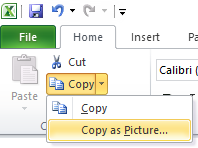
It’s safe to say that this feature is no longer needed.
Export
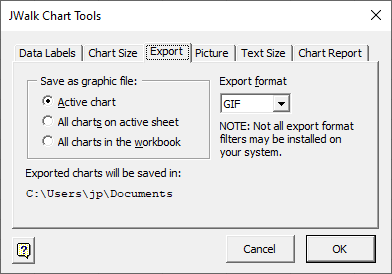
If you didn’t know VBA, the only way to get an image file of your chart was to take a screenshot (or copy it as a picture, as described above), crop it in an image processing application, and save it. JWalk Chart Tools gave users a way to export one or more charts as image files in a number of formats (GIF, JPEG, TIF, and PNG) into the folder containing the active workbook.
It wasn’t until recently, in Microsoft 365, that Microsoft finally added the capability to save a single chart as an image file. Right click on a chart, go most of the way down a very long context menu, and select Save as Picture. A Save As Picture dialog will open, allowing you to select the format and path of the image file.
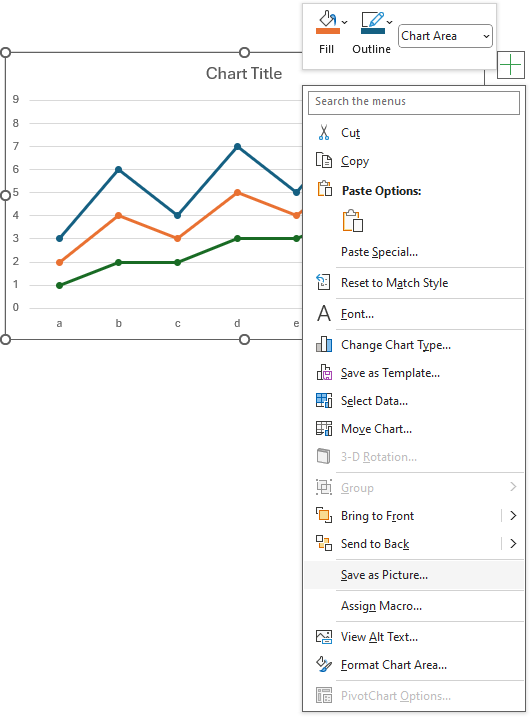
Unless you need to export chart pictures en masse (which my commercial charting add-in can do), this feature of JWalk Chart Tools is not needed.
Text Size
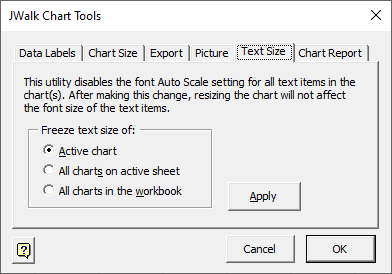
In Excel 2003 and earlier, charts had a special feature that would resize the text within a chart when that chart was resized. This sounds nice, until your carefully formatted chart would be distorted by a seemingly minor change in size. This frustrated many users, but JWalk Chart Tools came to the rescue, turning off this setting for the active chart or for many charts at once.
This feature disappeared in Excel 2007, so it isn’t needed any longer.
Chart Report
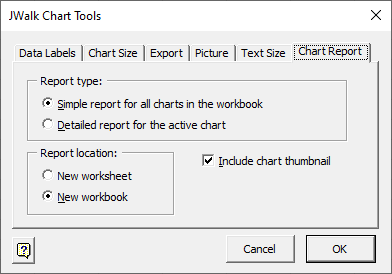
JWalk Chart Tools offers two reports for your charts. You can get a simple list of charts in your workbook, by worksheet, which includes the chart type, number of series, position, and size of each chart. Or you can get a more detailed accounting of a single chart, including chart name, position and size, chart type, title, description of axes used in the chart, and details about the chart type and data used in each series in the chart. You can choose to have a small thumbnail of each chart appear in the report.
This I think is the one feature that JWalk Chart Tools users miss when they lose access to the add-in. When I need this kind of report, I generally build a one-time VBA routine, then modify and rerun the routine as I realize I needed to include some other information.
JWalk Chart Tools 2.0
I’ve seen the forum questions about this add-in, and I’ve even received emails asking if I had anything like it, especially the Chart Report feature. But I never had anything I thought was ready for sharing.
Then I found an old version of the utility on an old computer and checked it out. I realized that most of the features were unnecessary, but the Chart Report would definitely be useful to many users.
I contacted John Walkenbach and asked whether I could refresh and redistribute the program, and he gave me his blessing.
I’m releasing the new add-in as JWalk Chart Tools 2.0, and it appears on the Chart Design tab when a chart is selected.
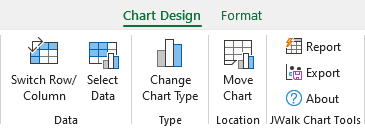
I’ve removed most of the features, but Report and Export remain. I’ve repurposed John’s existing code, removing obsolete features and making minor changes to ensure that it is compatible with the latest versions of Excel.
Chart Report
Use this feature to generate information about your charts: either a simple listing of your charts or a detailed report about the active chart.
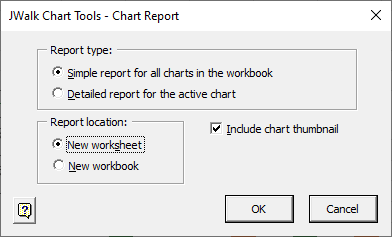
Export Chart(s)
Use this feature to export one or more charts in a single step.

About JWalk Chart Tools 2.0

Go to JWalk Chart Tools 2.0 to get your copy of this helpful Excel add-in.



